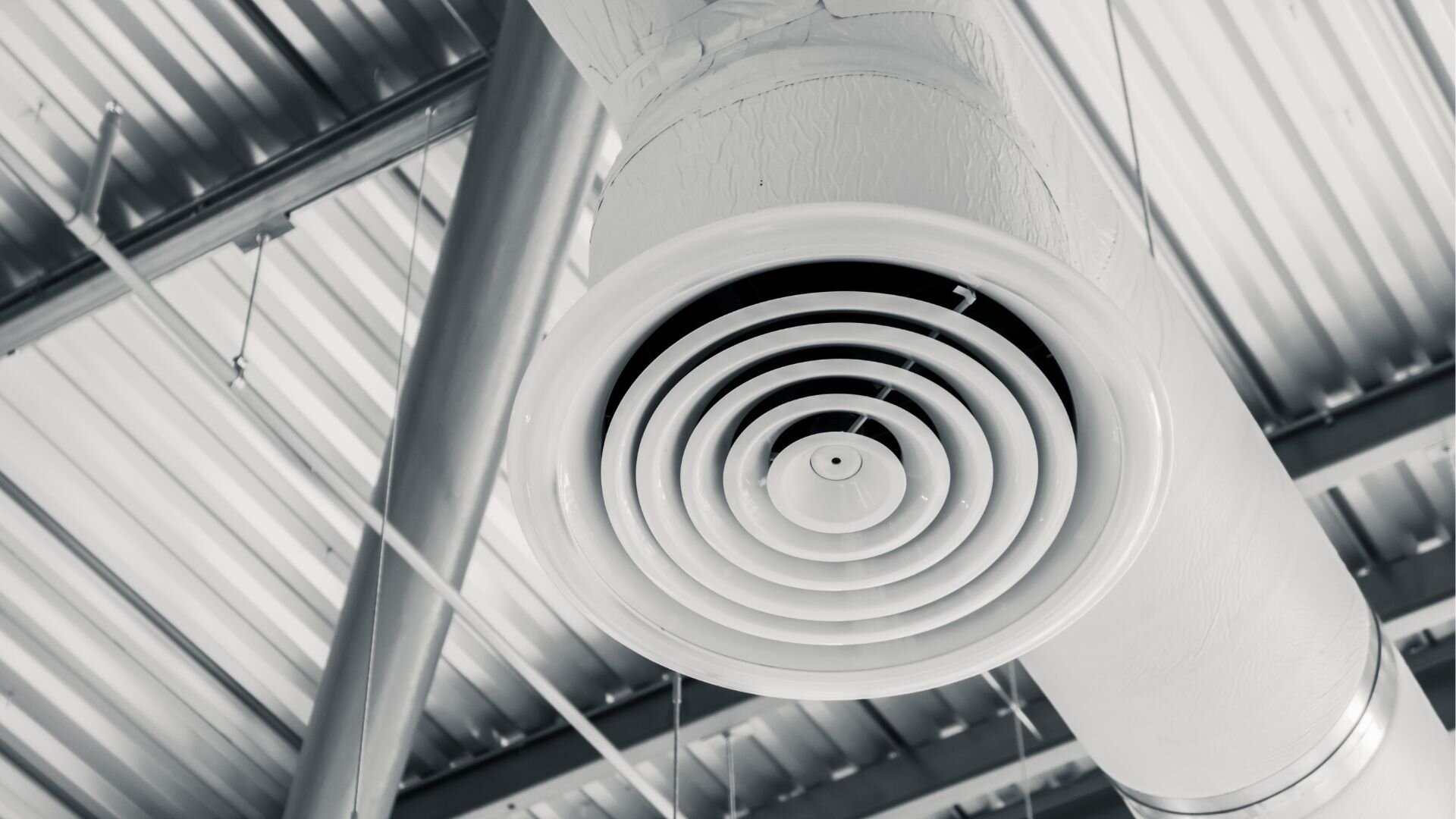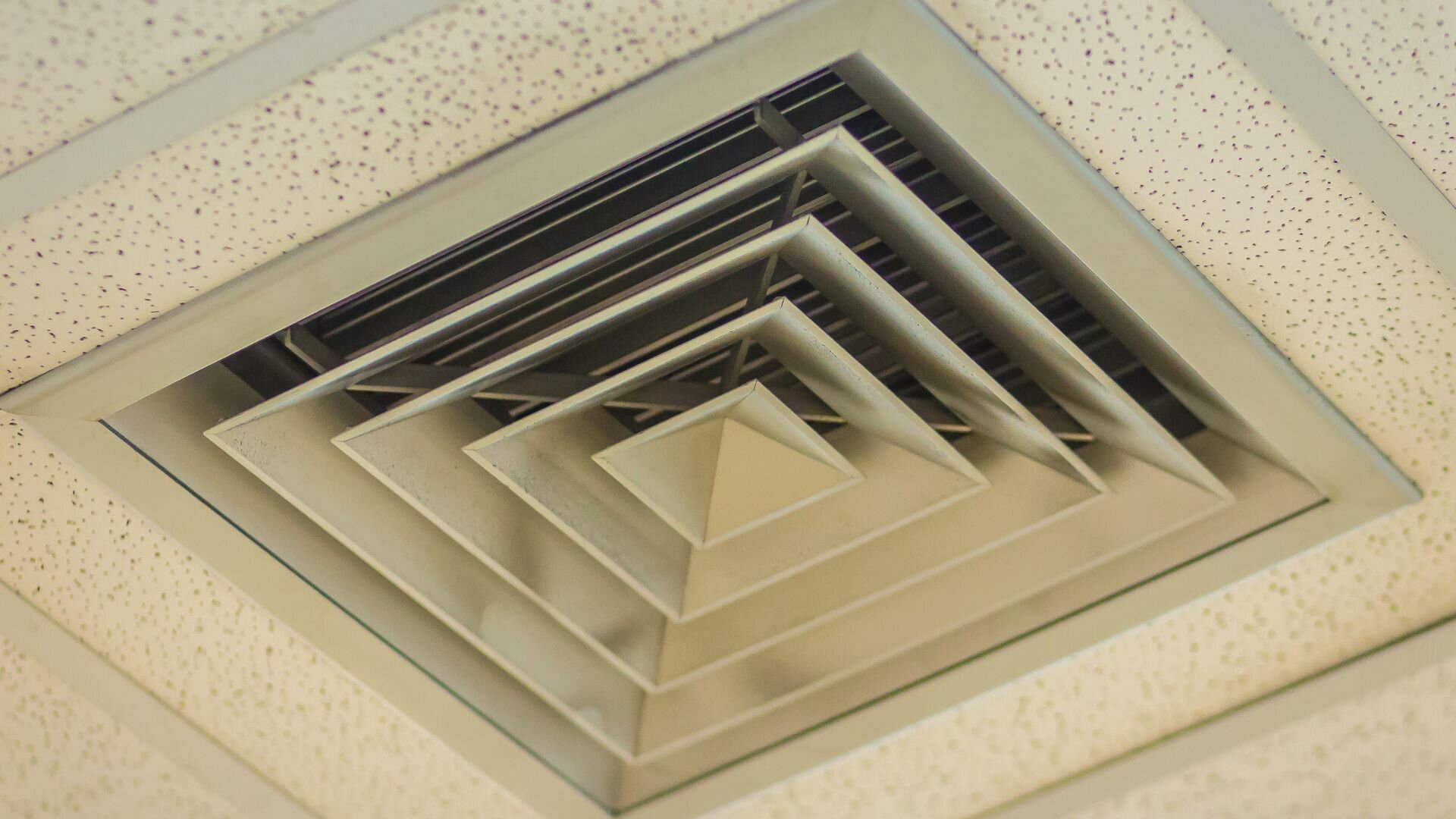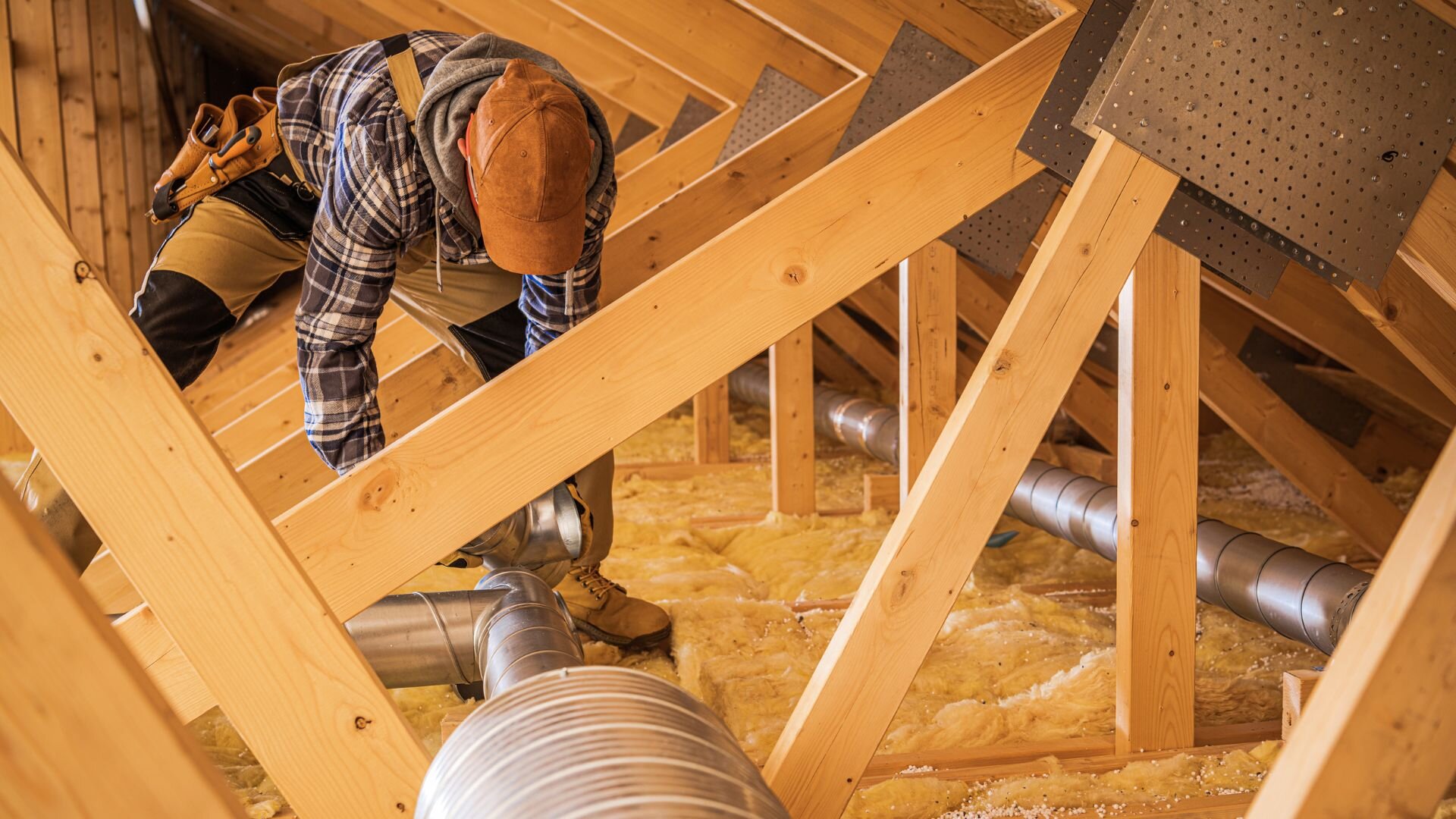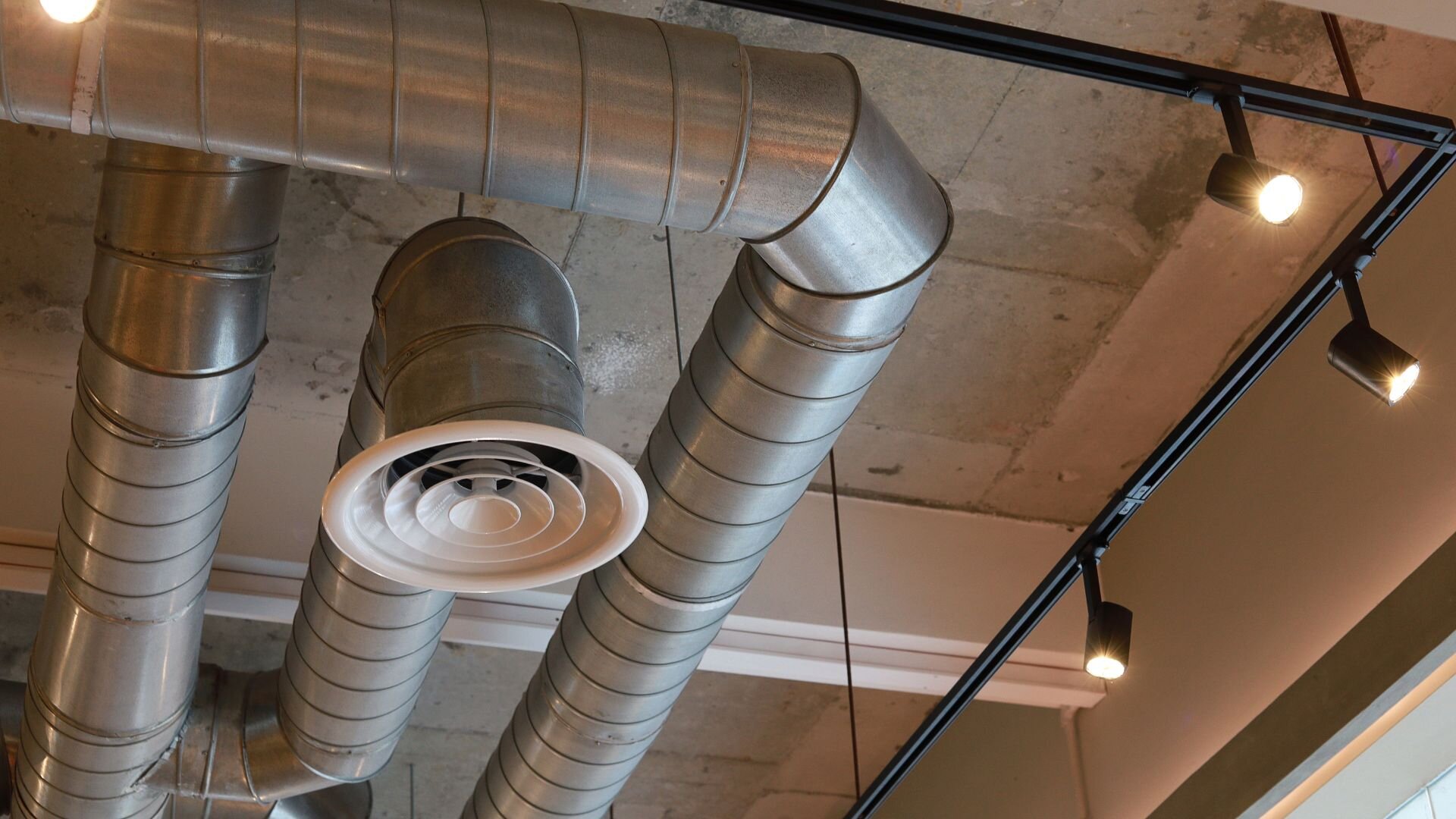Are you ready to install a new system in your home? Choosing the right ducted air conditioning system for your home is a critical decision that affects your comfort, energy bills, and carbon footprint.
With many ducted air conditioning options available, it’s essential to navigate the process with a clear understanding of your needs, the characteristics of your home, and the various systems on the market.
Well, we are here to help! Our comprehensive guide will walk you through the key considerations to ensure you select the perfect ducted air conditioner. We will take you through everything from understanding energy efficiency to sizing!
What Is A Ducted Air Conditioning System?
Ducted air conditioning systems are popular for those looking to cool multiple rooms or an entire home efficiently. Unlike split systems, a ducted system operates through a network of insulated ducts in your ceiling or floor, with air pushed through vents to different zones—allowing for a uniform distribution of cool air.
Central to the ducted air conditioning system is the central unit, usually installed on the roof or outside the house, connected to an indoor unit that controls the airflow.

Assessing Your Needs
Having a nuanced grasp of your home’s specific cooling needs is imperative. The right ducted air conditioning system for your space hinges on a thoughtful evaluation of various elements.
Consider the expanse of your living areas, particularly those used during the day when temperatures peak. The volume of air needing cooling is not solely a function of floor space but also the height of your ceilings - a critical dimension often overlooked.
The quality of your home’s insulation cannot be understated; it acts as a thermal barrier, influencing the workload placed on your system. A meticulously sized unit tailored to these parameters ensures a harmonious balance between performance and energy consumption.
A system with insufficient capacity can be stretched to its limits, struggling to maintain a cool ambience and risking premature wear or breakdown. On the flip side, a unit with excess capacity squanders energy, resulting in unnecessarily high operating costs without any extra comfort.
The goal is to achieve an equilibrium where the system is neither overburdened nor underutilised, ensuring efficient operation and longevity, all while maintaining the perfect climate in your home.
Energy Efficiency and Running Costs
The efficiency of an air conditioner is quantified by its Energy Efficiency Ratio (EER) or Seasonal Energy Efficiency Ratio (SEER) rating. These ratings clearly indicate how much cooling the unit delivers for each unit of energy it consumes.
Systems with higher EER or SEER ratings are engineered to utilise less electricity, which translates to lower utility bills. This efficiency also means the system contributes to a reduced carbon footprint, aligning your home with greener living standards.
Inverter technology has revolutionised the efficiency of ducted air condition systems. Unlike traditional fixed-speed compressors, which operate at full power or not at all, inverter systems can scale their compressor speed to the precise requirements of your home. This modulation means that the system consumes only the energy necessary to maintain the desired temperature, avoiding the energy waste associated with the stop-start cycles of conventional systems.
The potential energy savings from inverter technology can be substantial, particularly when coupled with smart zoning. By selectively cooling or heating occupied areas of your home, you can significantly reduce energy consumption while still enjoying optimal comfort.
Regular maintenance is crucial to continue reaping the benefits of an energy-efficient system. A well-maintained system operates more efficiently, retains a higher capacity for longer, and is less likely to suffer from costly breakdowns. Periodic checks should include cleaning or replacing filters, inspecting ductwork for leaks, and ensuring the outdoor unit is debris-free.
Sizing and Selecting the Right Unit
Selecting the right size ducted air conditioning system in Australia requires more than just square metre coverage. The ideal unit size, measured in kilowatts (kW), depends on various factors:
- Floor area and ceiling height
- Insulation quality
- Number and orientation of windows
- Local climate conditions
A professional technician can perform a precise heat load calculation to determine the exact kW capacity your home needs. This step is crucial to avoid the inefficiency of an undersized unit that can’t cool your space or an oversized one that cycles too quickly and wastes energy.
Remember, an accurately sized system will ensure efficient operation, maintain comfortable temperatures, and keep energy costs in check for your Australian home.

What About Installation?
The successful installation of a ducted air conditioning system is a critical step that requires meticulous planning and execution. This process is not merely about placing a unit; it involves efficiently integrating an entire network of ductwork within your home’s architecture.
Here’s what to consider during the installation process:
Ductwork Layout
The design of the ductwork must be optimised for airflow. It should facilitate a balanced air distribution to each room, avoiding any hot or cold spots. The layout must also accommodate the structural elements of your home without compromising the integrity of the system.
Roof and Ceiling Consideration
Sufficient roof space is crucial for accommodating the central unit and ductwork. The positioning of the unit should not only be strategic for air distribution but also for future maintenance access.
Insulation
Proper ceiling insulation is a key factor that influences the performance of your ducted air conditioning system. High-quality insulation helps to preserve the conditioned air, reducing thermal loss and minimising the workload on your air conditioner. This extends the system’s lifespan and enhances energy efficiency, leading to lower energy bills.
Professional Installation
The complexity of installing ducted air conditioning underscores the importance of engaging qualified professionals. Experienced technicians ensure that every system component, from the unit to the ducts, is installed correctly. They will also ensure that all electrical and refrigeration work complies with Australian Standards and regulations.
System Testing
After installation, thorough system testing is essential to confirm that it operates as intended. This includes checking airflow temperature control and ensuring no leaks in the ductwork.

Do You Need Heating And Cooling?
When choosing a ducted air conditioning system, consider the local climate and whether you need both heating and cooling. Ducted heating and cooling, or reverse cycle systems, are perfect for areas with extreme weather conditions. Furthermore, consider the running costs, energy efficiency, and whether the system can cool the entire home or just the daytime living areas.
Comparing Brands and Systems
Not all ducted air conditioning systems are created equal. Some brands have a proven track record in the AC industry, offering warranties and reliable customer service.
It’s important to compare different brands and ducted systems, considering the energy rating, features, and overall product quality. A reputable brand might come at a higher upfront cost but can save you money in the long run through lower running costs and less frequent repairs.
Get Optimal Efficiency in Ducted Air Conditioning Systems
Choosing the right ducted air conditioning system involves balancing many factors, including size, efficiency, and cost. By considering your home’s specific needs, the local climate, and energy efficiency, you can select a system that will provide comfort and savings for years.
Remember, investing in the right ducted air conditioning system is not just about immediate comfort; it’s about ensuring a sustainable, energy-efficient future for your home. Take the time to research and choose wisely, and you’ll enjoy the cool, refreshing benefits of a well-selected ducted air conditioner. If you are ready to install your new ducted air con on the Gold Coast, speak to our professional team at Enersol Electrical today!
Ducted Air Conditioner FAQs

How do I determine the correct ducted air conditioning sizing for my home?
Ducted air conditioning sizing ensures your cooling system is neither overpowered nor underwhelming. To determine the correct size, you must consider factors such as the total floor area, ceiling height, insulation quality, and local climate conditions. A professional HVAC technician can accurately calculate the cooling capacity needed to meet your home’s specific cooling requirements.
What steps can I take to keep my air conditioners and system running smoothly?
Proper maintenance is key to keeping your existing system running smoothly. This includes regularly cleaning or replacing filters, checking for and sealing duct leaks, ensuring the outdoor unit is clear of debris, and scheduling annual professional inspections. These practices not only extend the lifespan of your air conditioners but also maintain their efficiency and effectiveness.
What should I consider during the ductwork installation process for my new cooling system?
During ductwork installation, it’s important to ensure that the design allows for even air distribution throughout the home, minimising hot or cold spots. The ductwork should be compatible with the structural layout of your house, and the system should be tested post-installation to ensure it meets the cooling requirements efficiently.
Professional installation is recommended to ensure compliance with industry standards and optimal performance.
How often should I schedule proper maintenance for my ducted air conditioning system?
Scheduling proper maintenance for your ducted air conditioning system should be done at least annually to ensure it continues to meet your cooling requirements efficiently. However, the frequency can increase depending on usage patterns and environmental factors. Regular maintenance checks will help identify potential issues early on, ensuring that your system continues to operate at its best.
Remember, investing in the right size and type of ducted air conditioning system and regular maintenance will provide a comfortable indoor environment and could lead to significant energy savings over time.